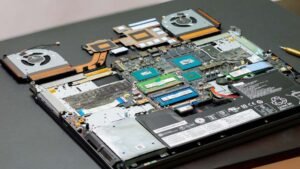Do you want to set your monitor to a 144 Hz or have you just bought a monitor that offers a 144 Hz refresh rate but it doesn’t run as advertised? So you do not need to worry about that because you haven’t activated that higher refresh rate in your newly bought monitor. Various software and hardware problems can limit the refresh rate of your monitor. So we are going to share the simple process of “how to set the monitor to a 144 Hz refresh rate”?
So, we are going to tell you that, if you follow these easy steps then your monitor will start to run at 144Hz. After following these easy steps that are mentioned below you’ll be able to activate 144Hz in your monitor and also get great results from your hardware. So, let’s get started!
Check the monitor’s settings
First of all, you need to check the setting of your monitor to see if your monitor supports 144Hz or not. Infect, if your monitor doesn’t support 144Hz or a higher refresh rate than 60Hz then it won’t run anything with that refresh rate no matter what. Then your monitor must be rated to supply that refresh rate to perform that high task.
You just need to search for the specifications of your monitor on the internet. And the super easy way is to do that you just need to turn on the OSD and there you can easily find the refreshing rate of your monitor. You should also check the windows that it is set at the advertised refresh rate.
Set A Monitor To A 144 Hz Refresh Rate in Windows 10
If you have windows 10 then you need to follow these steps.
- Go to “Settings”.
- Click on “system display”.
- Next, click on the option of “advanced display setting”.
- Now, choose the “display adapter properties”.
- Next, click on “monitor”.
- Here, choose “monitors advertised refresh rate” from the screen refresh rate list.
- Then, click “OK”.
Here you can see the refreshing rate of your monitor.
Set A Monitor To A 144 Hz Refresh Rate in Windows 7
If you have Windows 7,
- Right-click on the desktop,
- Next, choose the Screen resolution,
- Now, click on “Advanced setting”,
- Then select the option of “Monitor” from the tab,
- Then Choose “refresh rate”
- Click on “search refresh rate”.
Here you will find the refresh rate of your monitor.
And your graphic cards also offer the setup of the interface of refresh rate.
Display Port Connector
You must have an idea that the 120Hz/144Hz or higher refresh rate is running on your computer. So, it is very important to check out the ports of your monitors. Because only the display ports and a few of the DV ports can transfer higher refresh rate dates.
So you must be sure that your monitor won’t enable the higher refresh rate feature until you connect the monitor to your PC via a display port. And the one important thing is that The HDMI cables and the old VGA cables don’t support the feature of this higher refresh rate. So you need to use a display port cable.
1. Display-port-cable
The quality of cable does matter a lot. You should check these cables that came with your monitor. If the cable is cheap or local, so it will not be able to do the task. The low-quality cable can cause the issues like refresh rate dropping and flickering. So, you must use the display port cable provided with the gaming monitor. In this way, your monitor will start to run at 144 Hz.
2. Cable bandwidth
Display ports support video resolution above 3840 x 2160 pixels at 120 Hz, then the maximum bandwidth of 32.4 Gbps is set through the display port. But the most commonly used HDMI is HDMI 1.4, and it supports 4k resolution at 30 Hz. And in this case, the maximum bandwidth such as 10.2Gbps set through the display port. Then you should use the “premium high speed of HDMI CABLE” so that your monitor can run at a 144 Hz refreshing rate.
Some troubleshooting factors
There are some more troubleshooting tips that you have to follow:
1. Check the GPU
The Old GPU or Bad Drivers can also create this refreshing rate issue. The older GPU does not support the refresh rate of your monitor. so you have to check the GPU to see if it supports the resolution of the monitor and refresh rate or not. So we say that it’s very important to understand that if your monitor supports a 144 Hz refresh rate. So before you thought to buy a new monitor, firstly check the compatibility online on your graphics card’s specifications.
If you still can’t find the 144 Hz option, your GPU is old to support the higher refresh rate. However, before going to buy a new GPU, you should try updating your drivers to fix the issue.
- You should Type “Device Manager” in the search bar and then click on it.
- Next, Collapse the “Display Adapters” list.
- Choose the graphics card.
- Navigate it to the “Driver” tab.
- Press the option of the “Update Driver”.
- Select to find drivers automatically.
2. Update Graphic Drivers
You can also go to your GPU’s manufacturer’s website and also can download the latest drivers from there. You will find three options here:
- Intel option is for the Intel HD Graphics integrated graphics cards.
- AMD Radeon option will be for AMD dedicated cards.
- NVidia is for the NVidia cards.
When you update the driver, restart your system and try to set the refresh rate to 144 Hz.
3. Check for native resolution:
This is a good idea to set the monitor set to the native resolution because it provides great display quality. You can also check the manual of the user for BenQ- qualified timings. But before this setting, you have to update the graphics drivers first.
.
Conclusion
All things you must know to set your monitor to a 144Hz. We have tried to cover all the essential things in this post. Now you can easily check the refresh rating of your monitor through easy ways and find the real reason behind it. Then you can easily resolve this issue. We hope so, this article will help you a lot!




